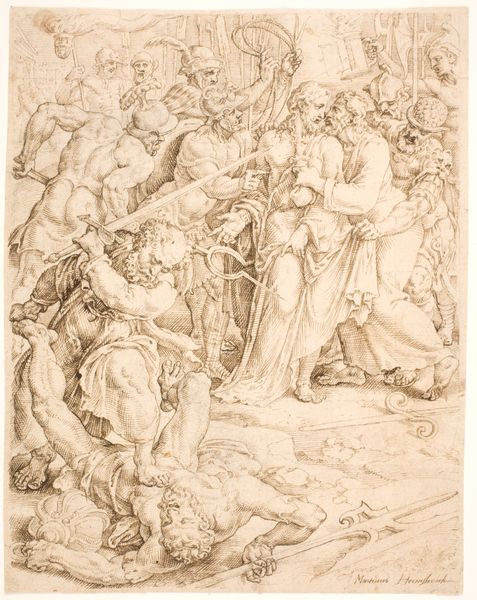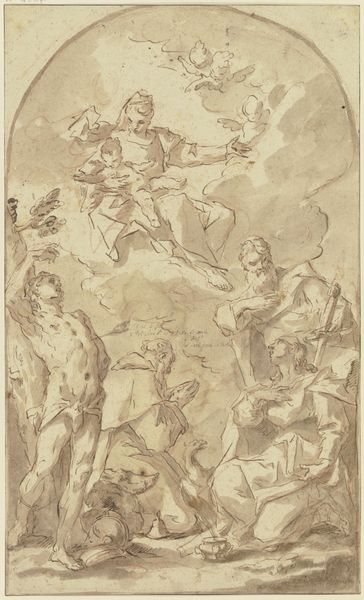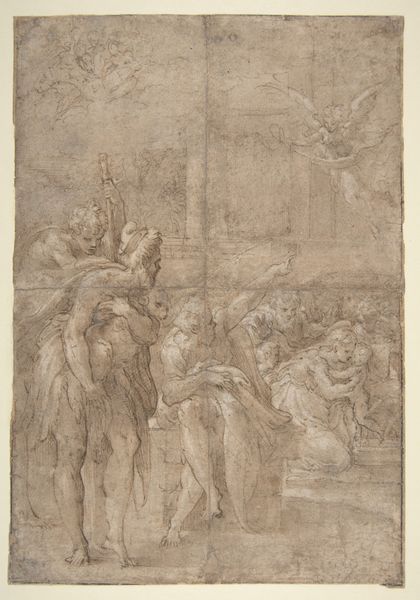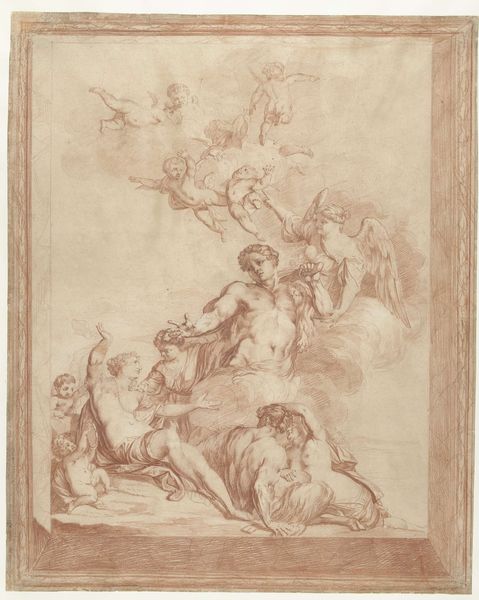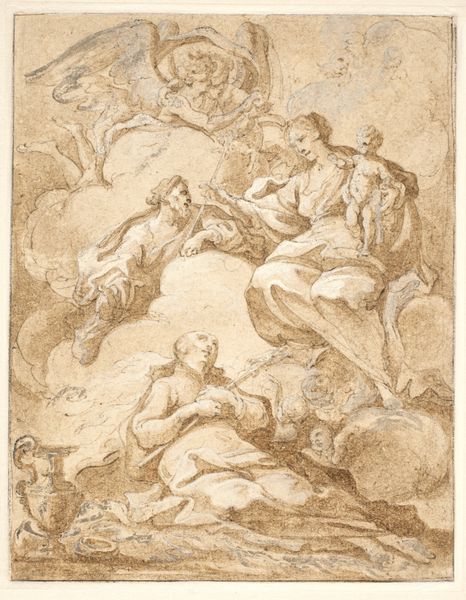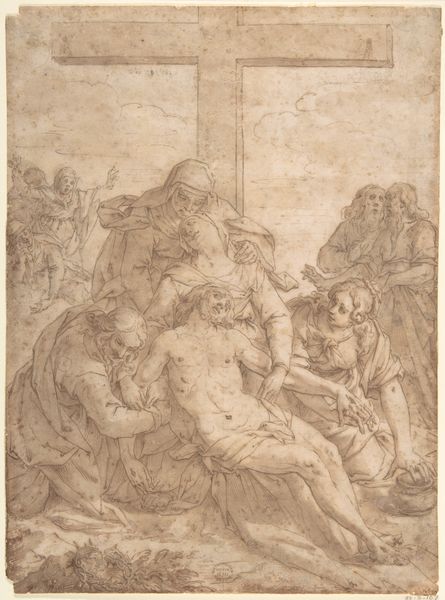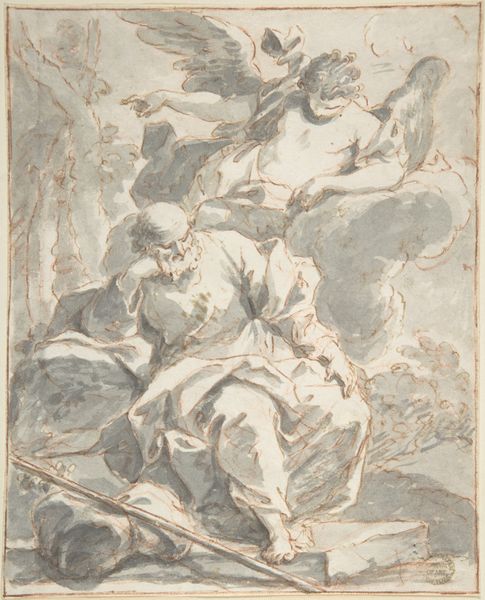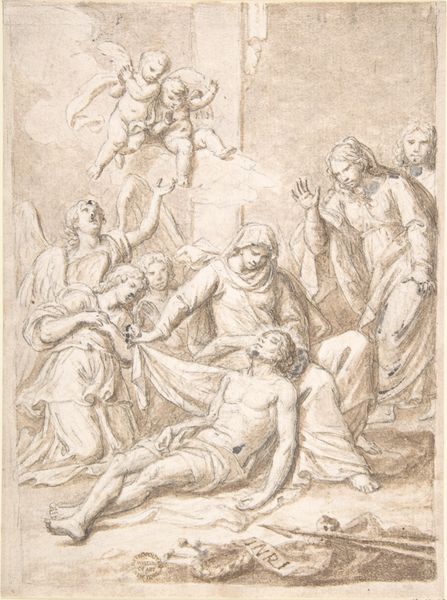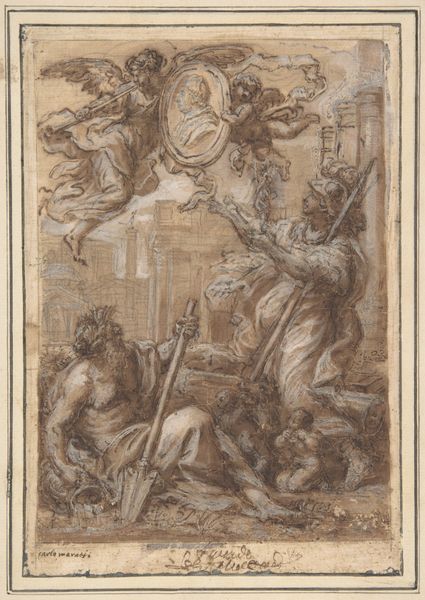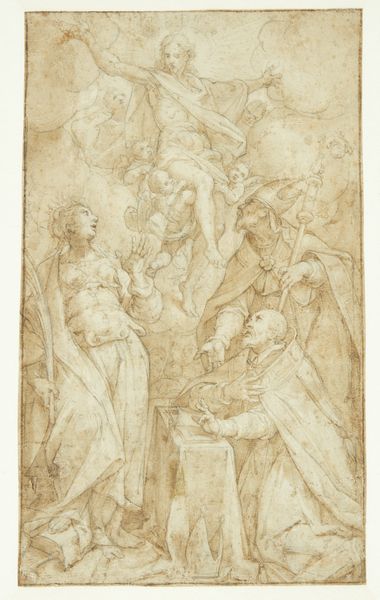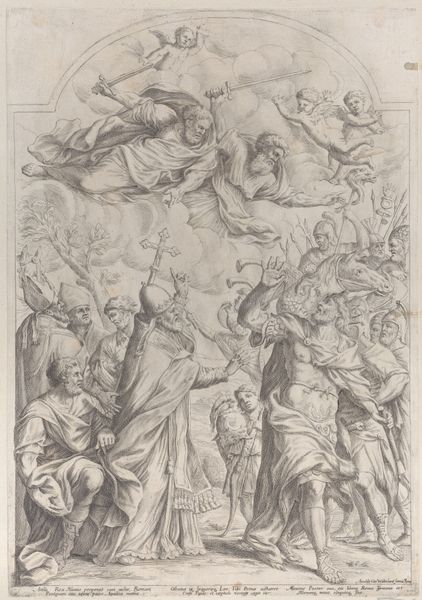
Apotheosis of Four Martyred Saints (Four Crowned Martyrs?) 1600 - 1700
0:00
0:00
drawing, print, charcoal
#
drawing
#
baroque
# print
#
charcoal drawing
#
figuration
#
oil painting
#
charcoal
#
history-painting
Dimensions: 14-3/4 x 6-1/8 in. (37.5 x 15.6 cm)
Copyright: Public Domain
Curator: It strikes me immediately how much the sepia tones and the soft blending of charcoal emphasize the ethereality of this image. It seems to hover just out of reach. Editor: Indeed. What we’re looking at here is "Apotheosis of Four Martyred Saints (Four Crowned Martyrs?)," a charcoal and chalk drawing attributed to Antonio Cavallucci, dating to sometime in the 17th century. It’s currently held at the Metropolitan Museum of Art. Curator: Attributed? So, the hand isn't entirely confirmed? I wonder about the paper, the specific batch, perhaps even a watermark that might tell us more about where and how this drawing was produced. It impacts how we view its purpose, doesn't it? Editor: Absolutely. Its function, within a broader historical and devotional context, is vital. Depicting martyred saints being received into Heaven was, during the Baroque period, frequently leveraged to inspire religious fervor. It’s a visual sermon, a testament to faith’s ultimate reward. Curator: Right, the politics of imagery at play. And think of the pigment production— where did the artist source the chalk and charcoal? Were there apprentices involved in preparing materials? I find that crucial to understand how the final artwork came into existence. Editor: And the patron who commissioned such a piece? Perhaps destined for a chapel, influencing the experience of worshippers? The distribution of religious imagery was far from neutral. These images carried significant social and political weight, and the materiality had implications for those messages being carried. Curator: Exactly! Was it displayed for the masses or solely for a wealthy family? How did its intended audience shape the artist’s decisions regarding scale and the perceived quality of materials? Was the value ascribed due to cost, technique, and rarity or political message. Editor: Those questions about audience impact its accessibility, too—both visual and conceptual. How does this image speak, or not speak, to modern viewers removed from that 17th-century Catholic framework? Curator: In the end, it’s this tangible relationship between hand, material, and social influence, visible even now, that for me, gives the image its potency. Editor: A potency shaped, undeniably, by both its inherent qualities and the complex socio-historical tapestry in which it was created and consumed.
Comments
No comments
Be the first to comment and join the conversation on the ultimate creative platform.
